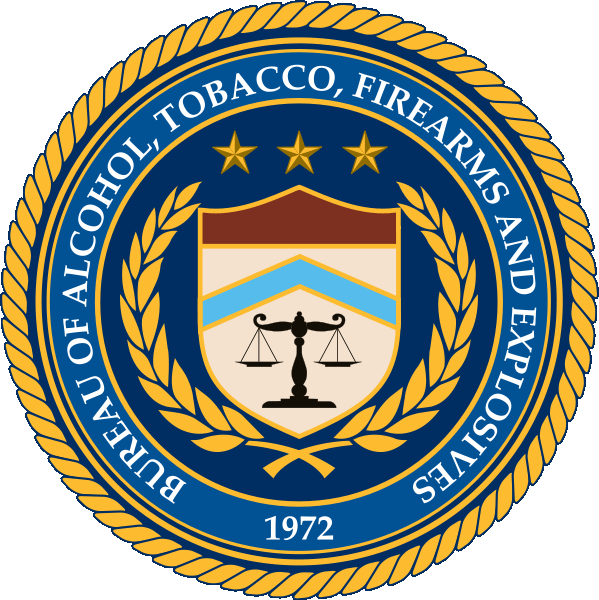In 2025, President Trump issued an executive order, Protecting Second Amendment Rights | Bureau of Alcohol, Tobacco, Firearms and Explosives. This order provides a fair framework for addressing violations uncovered by inspection, especially when there is no impact on public safety. It also provides an opportunity to reapply for a license by those who had their license revoked, voluntarily surrendered their license or had applications denied based on Zero Tolerance (EREP).
While the atmosphere is reverting to pre-EREP times, your requirements as an FFL have not changed, nor have the regulations regarding firearms process.
- You are still required by law to maintain your record-keeping in a timely manner.
- None of the legal or regulatory requirements have been changed.
- Firearm transfer regulations have not changed related to CGA or NFA firearms.
- Your staff must still meet all the requirements to handle/sell/make firearms.
- You must still have the proper license/SOT for CGA and NFA firearms.
The ATF is highly recommending electronic record-keeping as it makes their job easier and they find less issues with electronic records. Interestingly, the No Violations category is still only 53% of the total as indicated by the findings shown in statistics above. This means that you must conduct regular training and internal audits to make certain that you are not one of the 47% that have a warning, warning conference or revocation. Written compliance processes coupled with regular training are your best tools to assure that you remain compliant. Ask us for help or tools in this area.
What can you do to stay on the right side of Zero?

The first thing to understand is that zero tolerance is a real thing. Second, zero ATF violations is an attainable goal. Third, adopt a positive attitude towards compliance. Fourth, recognize that compliance starts before the firearms reach your dock door and continues until it leaves either by your front door or your dock.
The best way to ensure compliance is to use an ATF compliance software program suited to your business model and train your employees properly. Your employees need to understand their role in compliance, how vital their role is, and that compliance is mandatory.
The five Zero Tolerance Violations are:
1. Transferring a firearm to a prohibited person
2. Failing to run a required background check
3. Falsifying records, such as a firearms transaction record
4. Failing to respond to an ATF trace request
5. Refusing right of entry to conduct an inspection.
Transferring to a Prohibited Person & Failing to Run a Background Check
Vigilance is critical to your success as an FFL. The following paragraph covers how easy it is to run afoul of two significant acts that can cause the revocation of your FFL.
Easily avoid selling firearms to a prohibited person by using an electronic 4473 and performing a NICS check (or other state processes.) However, you can also run afoul by hiring an employee who is a prohibited possessor. Protect your business by running a voluntary NICS check on prospective employees. You might find an issue that disqualifies them from employment with an FFL. Common disqualifying events are a restraining order for domestic violence or being charged with using illegal drugs (like marijuana). The bottom line is that every day that person comes to work for you, you provide firearms to a prohibited person.


Falsifying Records
Recording Acquisitions and Dispositions within the allotted time frame is critical to avoid violations during an ATF investigation. The first step is to ensure you are acquiring the firearm from someone authorized to sell it or provide it to you.
How?
You need to either verify the person’s identity, get a certified copy of the FFL whom you acquired the firearm from or verify that the firearm matches your Form 6. Documenting an Acquisition is the beginning of your compliance. While regulations may allow you a longer time, best practices are to document the Acquisition the same day the firearm crosses your doorsill. How does this relate to zero tolerance? Well, making sure you record your Acquisitions and Dispositions in a timely fashion ensures you are never in a position to backdate a record (falsifying record).
Failing to Respond to an ATF Trace Request and Refusing Right of Entry to Conduct an Inspection
You have 24 hours to respond to an ATF trace request. Make sure your procedures include how you will handle a trace request. It’s essential to respond to requests promptly. Delegate the responsibility for requests to a specific employee when you are away from the business.
The ATF has the right to inspect your premises each year, and you have a legal responsibility to allow them to do so. The ATF will generally allow you to set a better time, within reason. It’s in your best interest if you provide them with access to your records in a comfortable environment. Providing the regulated information requested quickly and efficiently will expedite the process. The longer the audit goes on, the more it disrupts your business, and the more likely the ATF will find something causing you a problem.


Top 10 ATF Violations in 2022
Below is the list of the top ten ATF (125,870) violations in 2022. Looking through the list, you’ll notice all the violations start with “Failure to,” proving that by setting sound systems in place, zero violations is an attainable goal. Some of the violations have multiple sections and can result in numerous violations.
Three of the most cited violations involve incorrect 4473s. That may be a signature, incomplete forms, either by the buyer or the licensee, wrong dates – many, many opportunities to fail. Manufacturers and importers who transfer firearms as a courtesy to employees often fall prey to 4473 violations because they don’t have a good process. In those cases, you may be better off developing a relationship with a nearby dealer to avoid putting your license at risk.
1. 27 CFR 478.125(e) Failure to maintain an accurate acquisition & disposition record (33,526 citations)
2. 27 CFR 478.21(a) Failure to complete prescribed forms (22,230 citations)
3. 27 CFR 478.124(c)(1) Failure to complete 4473 (18,526 citations.)
4. 27 CFR 478.124(c)(5) Failure to sign and date 4473 (10,132 citations)
5. 27 CFR 478.123a Failure to maintain an accurate manufacturing record (10,114 citations)
6. 27 CFR 478.124(c)(3)(iv) Failure to document NICS contact information (10,097 citations)
7. 27 CFR 478.124(c)(3)(i) Failure to verify or record purchaser ID (5,913 citations)
8. 27 CFR 478.123(b) Failure to maintain an accurate/complete/timely acquisition & disposition record (5,641 citations)
9. 27 CFR 478.124(c)(4) Failure to record firearms information on a 4473 (5,304 citations)
10. 27 CFR 478.126a Failure to report multiple handgun sales (4,407 citations)
Compliance Requires a Group Effort
The point is that you alone cannot “manage” compliance for the entire business. You must instill compliance as a business process, a way of life. It’s imperative that your employees understand the role they serve in compliance. They are the last line of defense in keeping firearms out of the wrong hands and protecting the rights of those who comply with the law.
You are the front line in the ATF’s mission of public safety. Your records are a critical component in how the ATF gauges your effectiveness as a partner in the mission.

Using Easy Bound Book products will increase your accuracy and decrease the time required for record keeping
resulting in a higher degree of confidence to pass ATF inspections.
Whether you are a Manufacturer, Importer, or Dealer there is an Easy Bound Book® product designed for you.
